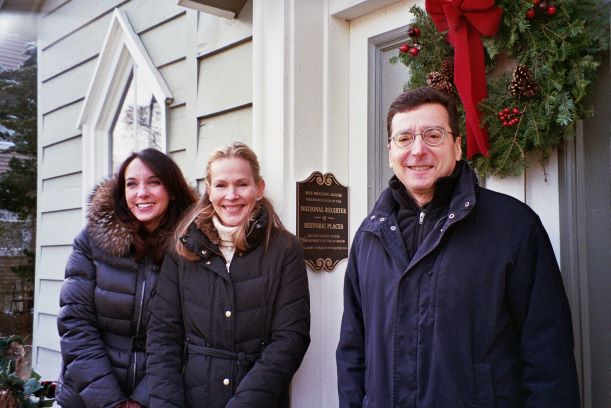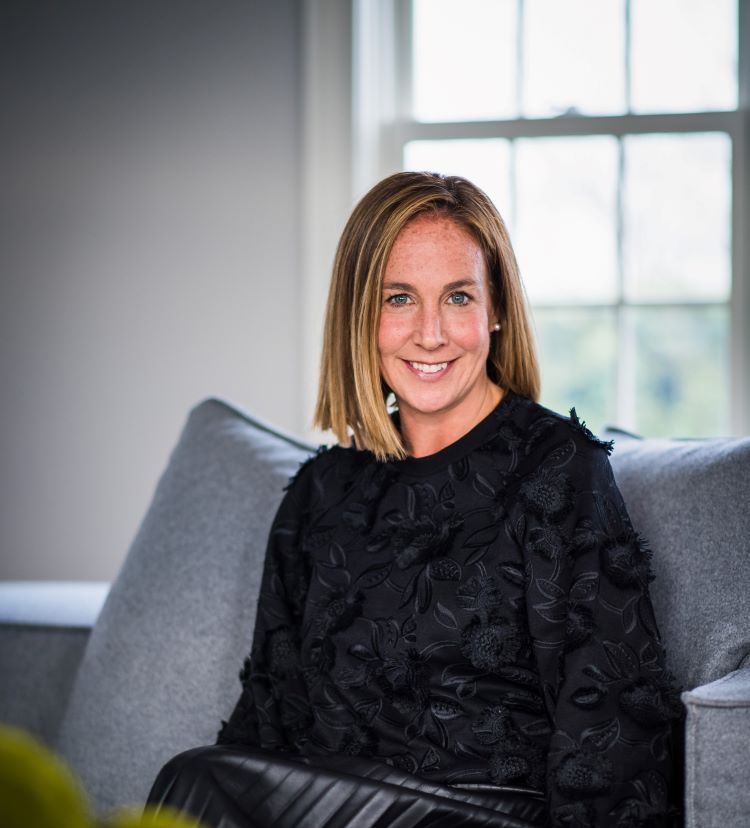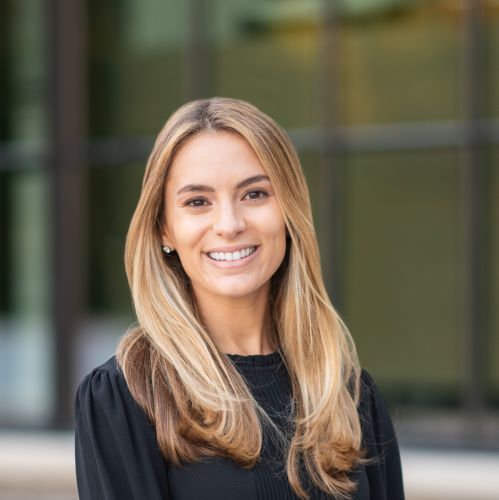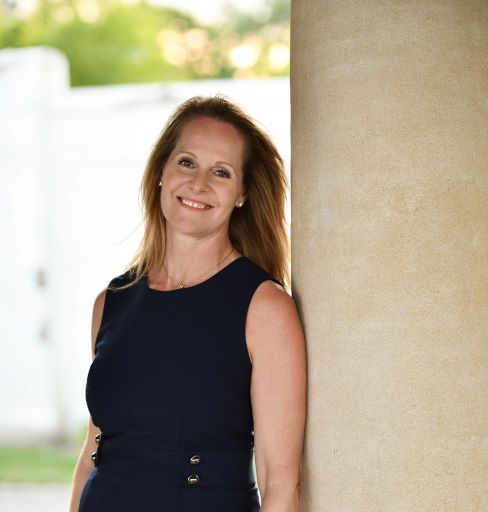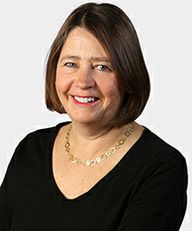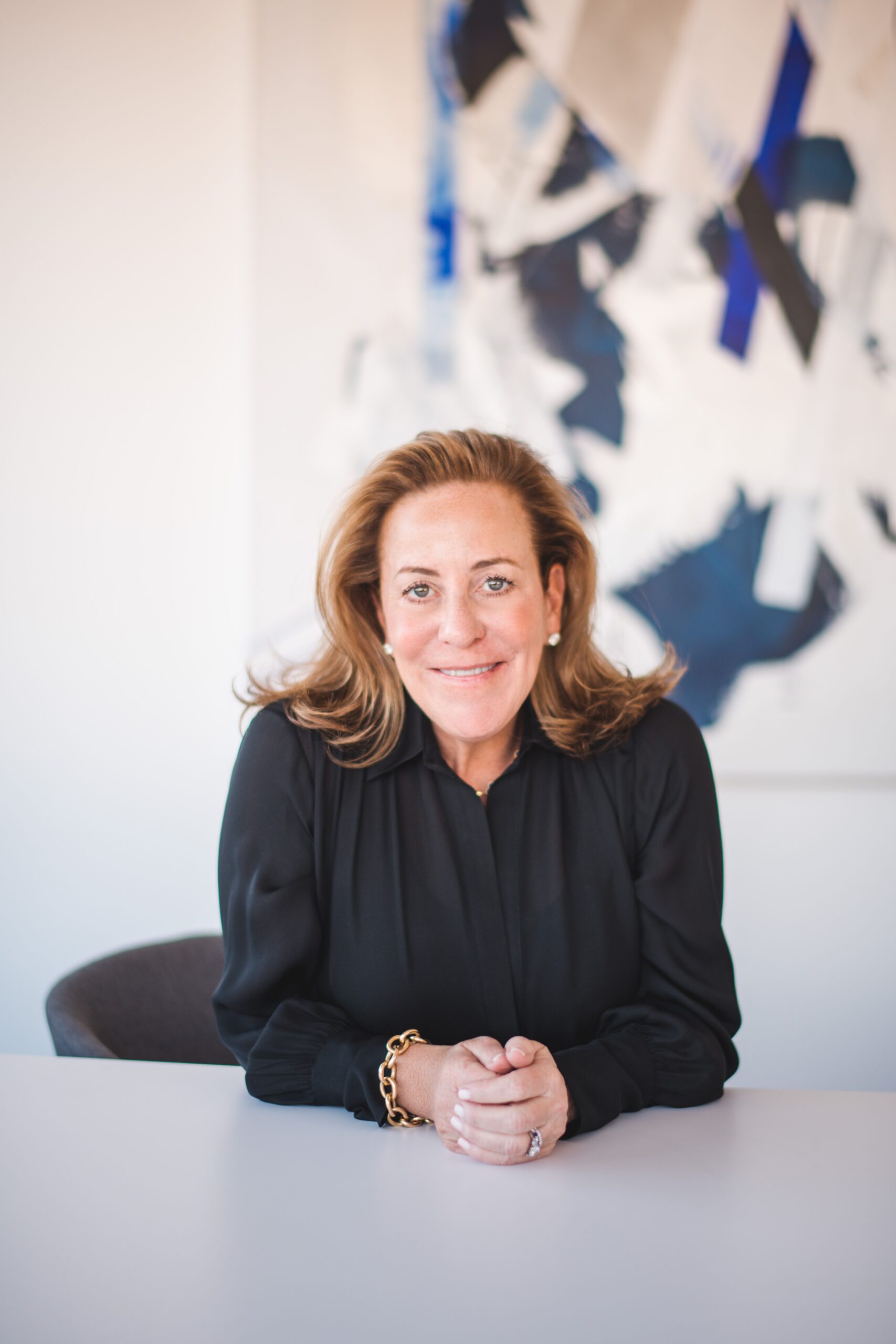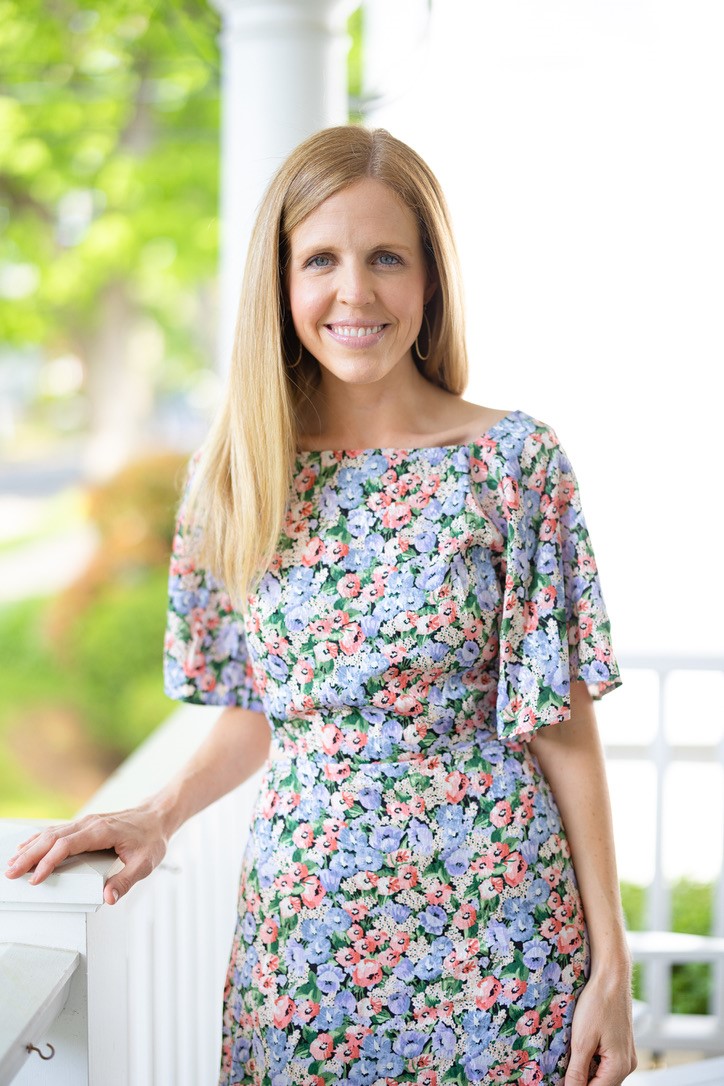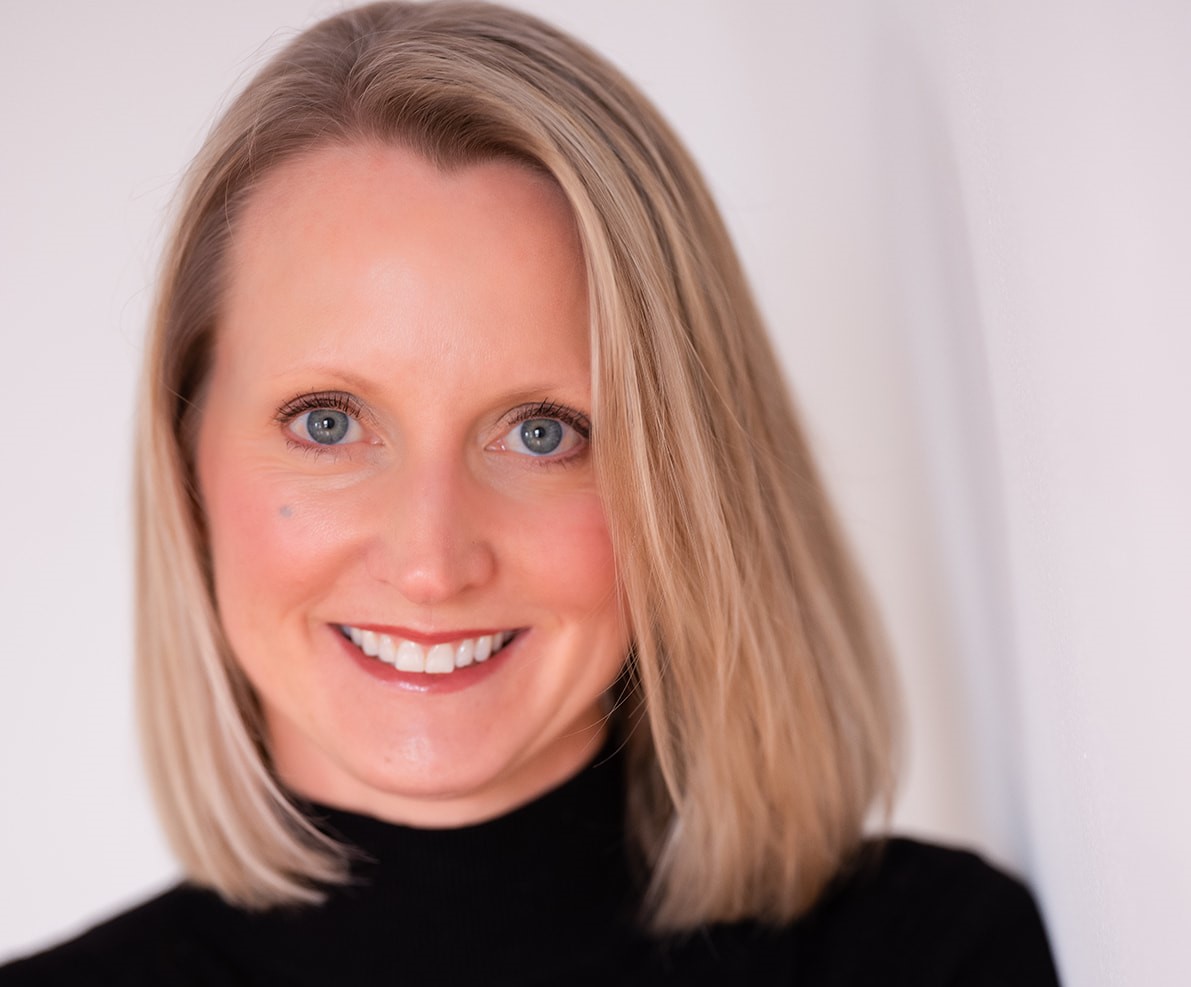City Councilmembers Julie Souza and Sara Goddard and Mayor Josh Cohn
at the dedication of the new plaque at the Rye Meeting House, which was provided through a grant from the Pomeroy Foundation.
Photo by Margot Burgheimer
And the Bronze Plaque Goes to… the Rye Meeting House
The Meeting House Conservancy, which has been placed on the National Register of Historic Places by the United States Department of the Interior, recently received a bronze plaque noting the designation. On December 21, community members, including Mayor Josh Cohn and City Councilmembers Julie Souza and Sara Goddard, braved the cold to witness the plaque dedication for the well-loved building.
The National Register nomination was written by Lisa Easton, Dan Kelly, and the late Peter Shaver. The Rye Meeting House was individually listed in 2011. The Pomeroy Foundation in Syracuse, New York, recently provided a grant for purchase of a handsome bronze plaque recognizing the building’s historic designation.
Aaron Griffiths, Board Secretary of the nonprofit Conservancy, thanked the Pomeroy Foundation and read a letter from Paula Miller, the foundation’s executive director. She said, “You continue to do incredible work preserving your community’s past and the history of this property. … At the Pomeroy Foundation, one of our main initiatives is to help people celebrate their community’s history with historic markers.”
Griffiths briefly recounted the history of the Meeting House. The core of the building was constructed at another location in the 1830s as a one-room schoolhouse. When no longer used, it was moved to its site on Milton Road in 1867. It became affiliated with Rye’s Christ’s Church, first as a Sunday school. At the time, it was considered more cost effective to move a building than to build new.
Over the next decade, the Church transformed the schoolhouse into an Episcopal chapel, with a series of additions, tripling the size. The transformation culminated with the picturesque Gothic Revival bell tower in 1877. At the time, it was called Grace Chapel or Milton Chapel.
The building served as an Episcopal chapel for nearly 90 years. In the second half of the 20th century it was purchased by the Religious Society of Friends and became a Quaker meeting house. It was also used as a Zen meditation center. Griffiths said, “By serving these three religions, the building represents, in part, the freedom of religion guaranteed in the First Amendment of the U.S. Constitution.”
Now it has come full circle. The building is entirely secular and operated by the nonprofit for public education under a 50-year agreement with the City of Rye. The Greater Hudson Heritage Network recently honored the Bird Homestead and Meeting House Conservancy with an award for excellence in education, “in recognition of “When Science Meets History”, a six-part series of lectures that demonstrated ways that science and history affect each other and advance the understanding of the past and present. The series furthered the Conservancy’s goals of making the Meeting House and Bird Homestead active sites for public education and encouraging thinking across disciplines.”

